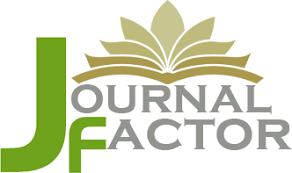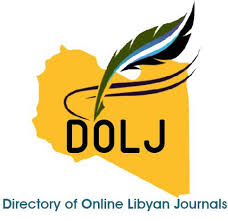Correlation between glycated hemoglobin level and hypertension in Libyans with type- II diabetes mellitus
DOI:
https://doi.org/10.54361/ljmr.162010Keywords:
diabetes mellitus, glycated hemoglobin HbA1c , diabetes, hypertensionAbstract
Objective: Hypertension and diabetes are closely related morbidities. There is research examining the correlation between blood pressure (BP) and glycated hemoglobin (HbA1c) levels in diabetes mellitus. The objective of the current study was to investigate the correlation between high BP and glycated hemoglobin (HbA1c) levels. Materials and methods: In a cross-sectional study, 47 diabetic patients in (Diabetes & Endocrinology Center Tripoli – Libya) were chosen. Blood pressure was measured using a mercury sphygmomanometer, and Serum HbA1c and Lipids were measured by enzymatic method Cobas Integra. HbA1c was measured by immunoturbidimetric ally COBAS INTEGRA. Correlation (Pearson) analysis was used to explore the association between hypertension and hyperglycemia. Independent risk factors for systolic and diastolic BP were analyzed using correlation. Results: Subjects in HbA1c group type-II diabetes mellitus (n = 47), as compared with healthy control HbA1c (n = 23). There were strong significant correlations between glycated hemoglobin (HbA1c) and Systolic blood pressure (SBP) (r=0.436**, P=0.001), significant correlations between glycated hemoglobin and Diastolic blood pressure (DBP) (r=0.133, P=0.269), had a significantly higher risk for hypertension, respectively. correlation analysis revealed that HbA1c was an independent factor of systolic and diastolic BP. Conclusions: The study presents a correlation between hyperglycemia and hypertension in type-II diabetes, our findings suggest that hyperglycemia as well as higher HbA1c within the type-II diabetes range is associated with a higher prevalence of hypertension independent of other cardiovascular risks.
Downloads
References
. Paul Rheeder, Tessy Muthembe, Stefan Lawson &Julie Brink. Diabetes and hypertension screening in Zandspruit, Johannesburg 2012–2014 Pages 219-224
. Thomas Beaney, Anca Chis Ster, Neil R. Poulter, Xin Xia, Hatem Fageh, Omar Msalam, Hawa A. Derbi, Afaf M. Osman, Mohamed Aghilla, Zaki A. Bettamer, Mabroukah O. Fhail Alboum, Osama T. Elsari, Emhemed M. Elhemali, Rabea A. Zidan, Abdunnabi Musbah, Hazem Eltawell, and Hesham A. Ben Masaud; The MMM Data collectors: May Measurement Month 2018: an analysis of blood pressure screening in Libya
. National Center for Disease Control (NCDC)
. John R. Petrie, MD, Ph.D., Tomasz J. Guzik, MD, Ph.D., and Rhian M. Touyz, MD, Ph.D. Diabetes, Hypertension, and Cardiovascular Disease: Clinical Insights and Vascular Mechanisms Can J Cardiol. 2018 May; 34(5): 575–584.
. https://www.wikidata.org /wiki/Special: EntityPage/ Q41861#sitelinks-wikipedia
. International Diabetes Federation (IDF). (2006): Diabetes Atlas, 3rd edition.
. Yan et al. Association of blood glucose level and hypertension in Elderly Chinese Subjects: a community-based study. BMC Endocrine Disorders (2016) 16:40
Downloads
Published
Issue
Section
License
Copyright (c) 2022 Akram. M. Elhegagi, Fathi. A. Alsharif, Salem Ali Elfituri (Author)

This work is licensed under a Creative Commons Attribution-NonCommercial-NoDerivatives 4.0 International License.
Open Access Policy
Libyan journal of medical Research (LJMR).is an open journal, therefore there are no fees required for downloading any publication from the journal website by authors, readers, and institution.
The journal applies the license of CC BY (a Creative Commons Attribution 4.0 International license). This license allows authors to keep ownership f the copyright of their papers. But this license permits any user to download , print out, extract, reuse, archive, and distribute the article, so long as appropriate credit is given to the authors and the source of the work.
The license ensures that the article will be available as widely as possible and that the article can be included in any scientific archive.
Editorial Policy
The publication of an article in a peer reviewed journal is an essential model for Libyan journal of medical Research (LJMR). It is necessary to agree upon standards of expected ethical behavior for all parties involved in the act of publishing: the author, the journal editorial, the peer reviewer and the publisher.
Any manuscript or substantial parts of it, submitted to the journal must not be under consideration by any other journal. In general, the manuscript should not have already been published in any journal or other citable form, although it may have been deposited on a preprint server. Authors are required to ensure that no material submitted as part of a manuscript infringes existing copyrights, or the rights of a third party.
Authorship Policy
The manuscript authorship should be limited to those who have made a significant contribution and intellectual input to the research submitted to the journal, including design, performance, interpretation of the reported study, and writing the manuscript. All those who have made significant contributions should be listed as co-authors.
Others who have participated in certain substantive aspects of the manuscript but without intellectual input should only be recognized in the acknowledgements section of the manuscript. Also, one of the authors should be selected as the corresponding author to communicate with the journal and approve the final version of the manuscript for publication in the LJMR.
Peer-review Policy
- All the manuscripts submitted to LJMR will be subjected to the double-blinded peer-review process;
- The manuscript will be reviewed by two suitable experts in the respective subject area.
- Reports of all the reviewers will be considered while deciding on acceptance/revision or rejection of a manuscript.
- Editor-In-Chief will make the final decision, based on the reviewer’s comments.
- Editor-In-Chief can ask one or more advisory board members for their suggestions upon a manuscript, before making the final decision.
- Associate editor and review editors provide administrative support to maintain the integrity of the peer-review process.
- In case, authors challenge the editor’s negative decision with suitable arguments, the manuscript can be sent to one more reviewer and the final decision will be made based upon his recommendations.














